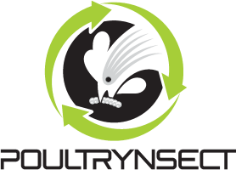Impact
Impact
We foresee that the use of insect larvae as innovative feed ingredient will support environmental sustainability by creating a circular economy in which secondary raw materials will be used as growing substrates. The insect larvae thus obtained will be used as environmental enrichment to positively impact the welfare of slow-growing chickens, along with the maintenance or improvement of birds’ health and the potential reduction of antibiotics use as a consequence of the prebiotic properties of insect chitin. The main expected outcomes are the following:
- to propose and exploit circular economy solutions to valorize secondary raw materials for growing insect larvae by creating new scenarios, where poultry husbandries can include insect growing facilities, in which insect larvae are fed on agro-industrial by-products;
- to improve animal welfare and health. The development of antimicrobial resistance in veterinary medicine causes therapy failure in animals, lowering of productivity, loss of animals, decreased animal welfare and increased costs. This urges the need for reliable feeding practices, minimizing antimicrobial use (and consequent resistance).
- to increase farmer and consumer awareness of food products obtained by animals reared in enriched and more natural environments, at the same time ensuring high sensory and nutritional quality of the organic products.
- to increase overall sustainability based on the above in combination with reduced use of SBM and therefore allowing a more sustainable production of chicken meat.
The outcomes of the project will impact the society by reducing the environmental impact and by meeting the increasing consumer demands for healthier poultry products that are produced using high welfare standards. This proposal will also sensitize the farmers on environmental issues by recommending the employment of practical devices, such as special designed larvae dispenser, whose costs are offset by improved animal performance and that can lead to potential market premium.
The innovation potential of the Poultrynsect project can be summarized in very few words: stakeholder needs-oriented solutions, scientific evidence-driven development and professional innovation management. The present proposal suggests to partially replace SBM with live insect larvae obtained through organic waste recycling. This idea surges by the observation that soybean is mainly produced in three countries (USA, Brazil and Argentina) far away from EU, thus implicating costs for the transportation and for the environment. In particular, SBM production has a deforestation impact on the provenance countries’ landscape and lower biodiversity than local agricultural practices, with side effect on the social sustainability of the in local market supply chains. The waste reduction indexes highlighted during the insect bioconversion process depend on the humidity and nutrient quality of the rearing substrates used. For instance, the rearing of black soldier fly larvae on 1 ton of organic waste lead to about 330 kg of fresh larvae and 210 kg of frass vegetables waste or by-products, respectively. According to the EU report “Facts and figures on organic agriculture in the European Union”, the organic animal sector is developing at a fast pace in the EU.
Poultry is the most important sector, accounting for about 43% of the total, and registered a 14% yearly increase in the organic poultry head numbers between 2005 and 2015. The EU demand of protein sources for animal feeding is projected to increase from 49 MT in 2016 up to 55 MT in 2026 (https://ec.europa.eu/agriculture/sites/agriculture/files/markets-and-prices/medium-term-outlook/2016/2016-fullrep_en.pdf) and the actual market value for animal feeding proteins (mainly from soy) ranges from 0.3 to 0.5 €/kg. The functional feed ingredients market value varies instead from 10 to 500 €/kg (depending on function, efficacy and concentration), with a worldwide market value of 15.4 billion USD of which 3.5 billion USD in Europe, only. The expected market growth is estimated to be around 3-5%/year (Animal Feed Additives: a global strategy Business Report June 2017” report, published and distributed by Global Industry Analysts, Inc., www.strategyR.com).
At the EU-28 level, there were 17.8 million organic poultry in 2015. France is the leading Member State in the organic poultry sector with about 13 million animals, followed by Italy with 4 million animals, The Netherlands and Belgium (2-3 million of animals).
Considering that SBM is the major protein source for chickens breeding and its average inclusion into the feed is 20% with variation according to bird age, one slow-growing chicken utilise 1.6 kg SBM during the growing period. Therefore, only considering the Italian market, SBM used to produce chicken diets for 4 million dual-purpose chickens reared for meat production is around 6.400 tons/year. The local producers of organic vegetable waste and agro-industrial by-products can solve a big problem using insect larvae to reduce the environmental impact of waste disposal. If we evaluate the domestic requirement of waste to produce larvae to replace the 25% of SBM (1600 ton/year) in the diet of chickens, we can estimate an amount from 5333 to 10666 tons/year of vegetable waste used (depending on the nutritional characteristic of the waste). Tangible innovation is an essential component of the Poultrynsect project, which aims at improving sustainability of poultry feeding technologies for circular use of residual agro-industrial feedstocks and to include the reared insects in the feeding programs. Poultrynsect is a research project developed by a consortium of scientists of four European countries (Belgium, Germany, Italy and Norway). The well-balanced geographical distribution of the partners, covering both Northern and Southern European countries, assures a very wide project result exploitation that can be useful for the different realities of organic chicken farms that can be found in the EU.
